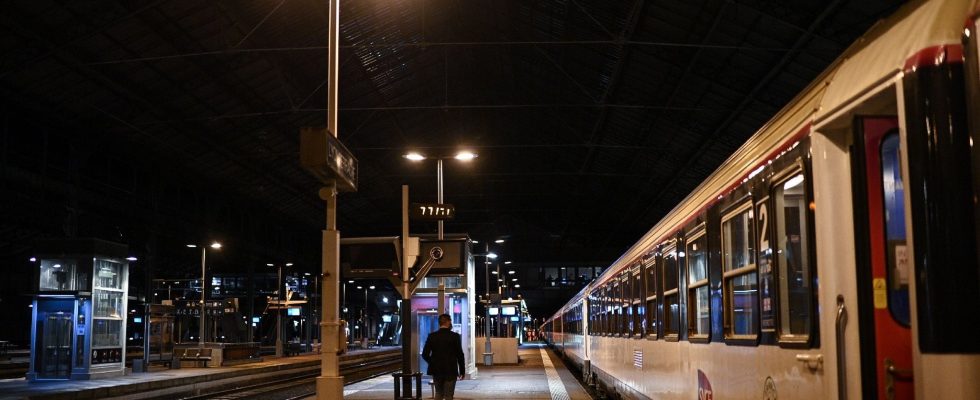French and German ministers, directors of SNCF, Deutsche Bahn and the Austrian company ÖBB… The list of official accreditations for the departure of the first Berlin-Paris night train this Monday, December 11, nine years after the interruption of this line, alone testifies to the importance of the moment.
With the return of the night line between the French and German capitals, the day after the inauguration of a line between Paris and Aurillac, the return to favor of the night train in France therefore seems to continue.
In any case, this is what the attendance figures for these lines show. The SNCF thus claims that 700,000 travelers would have opted for night travel in 2022, compared to 350,000 in 2019. And this trend would continue: still according to the SNCF, 215,000 travelers slept on the rails last summer, i.e. 15 % more than the previous summer.
10 night train lines by 2030?
In recent years and faced with the craze for modes of transport that emit less CO2 than planes or cars, several European countries, starting with France, have chosen to relaunch night trains. However, the latter were particularly popular in France until the 1980s, when the arrival of the TGV and then the development of low-cost airlines gradually reduced their popularity. Until almost disappearing, due to lack of profitability: in 2020, France only had two night lines operated by the SNCF, one going from Paris to the Pyrenees, the other linking Paris to Briançon.
It was then that the government declared that it wanted to bring these night trains up to date, particularly for ecological reasons, and announced investing nearly 100 million euros in the renovation of old Corail cars as well as in station installations. required.
In 2021, Paris-Nice, Paris-Tarbes-Lourdes and especially Paris-Vienne are back on track. On this occasion, the former Minister of Transport Jean-Baptiste Djebarri even announced that he wanted to achieve 10 night train lines by 2030, an objective confirmed by his successor Clément Beaune. The Paris-Berlin and the Paris-Aurillac are moving in this direction, bringing the number of nighttime rail lines in France to six for the moment.
Particularly subsidized lines
But if the night train enjoys a certain popularity, among fans of “slow travel” – these eco-friendly travelers concerned about the carbon impact of their travels – but also passengers simply wishing to optimize their time, it remains an unprofitable product for companies.
The French state still largely subsidizes the relaunched lines: around 10 million euros per year for the connection to Berlin and between three and four million for that to Aurillac, according to the Ministry of Transport. This is the only way for companies to offer affordable prices ranging from 29.90 euros for a seated seat, to 92.90 euros for a place in a sleeping car between Paris and Berlin – provided you reserve your seat sufficiently in advance. advance.
The price of this transport must in fact remain accessible whereas in 2021, a survey carried out by Europe on Rail in 2021 noted that 70% of Europeans were prepared to travel by night train if the prices were “reasonable”.
In any case, all these problems do not scare certain private players, like the French company Midnight Trains which intends to relaunch the once popular Paris-Milan-Venice line. Almost becoming obsolete only a few years ago, traveling at night across France and Europe on the rails could well become the norm again in the coming years.
